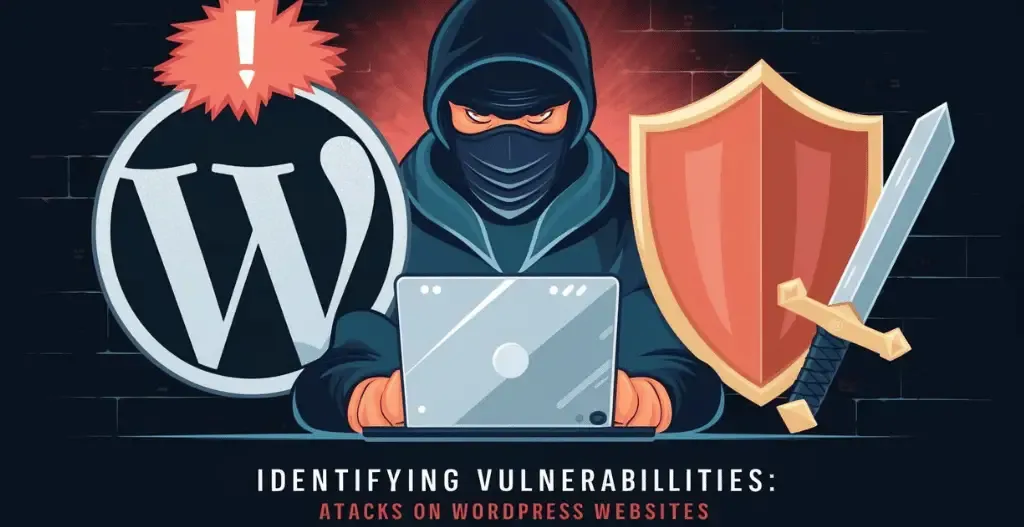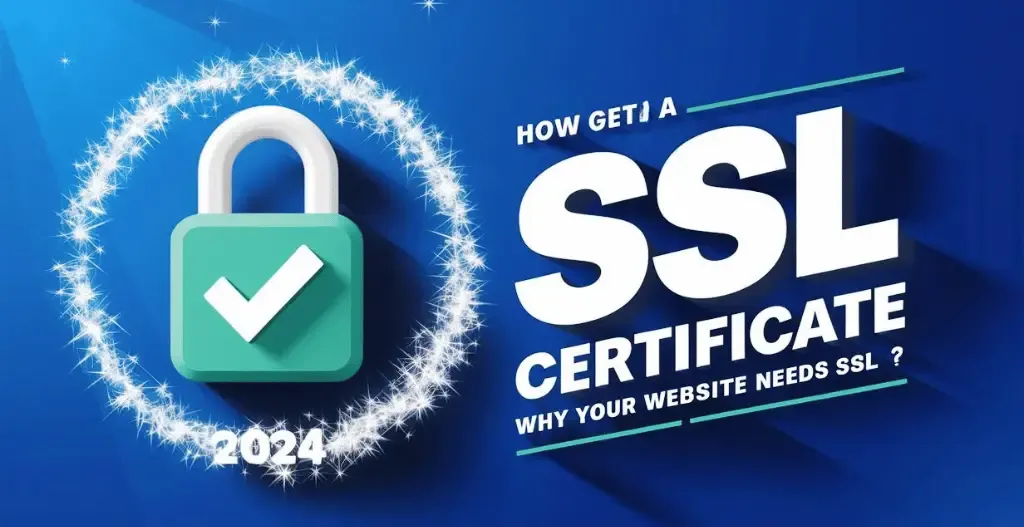Building a secure online presence with your WordPress website is not just a choice but also in today’s digital world. With cyber threats on the rise, knowing the 10 ways to secure your WordPress website is paramount to protecting your online presence from potential security breaches. Let’s explore actionable strategies and best practices to secure your WordPress website and ensure peace of mind in the realm of online security.

Identifying Vulnerabilities
Ensuring the security of your WordPress website starts with identifying and addressing potential vulnerabilities. Here are essential steps to take to secure your WordPress website from different types of vulnerabilities :
- Regularly audit plugins and themes : Periodically review the plugins and themes installed on your WordPress site to ensure they are up to date and free from any known vulnerabilities.
- Ensure strong passwords for all accounts : Using a strong, unique passwords for all user accounts, including admin and FTP logins, is a good step to prevent unauthorized access.
- Disable file editing within WordPress dashboard : By disabling the file editing feature in the WordPress dashboard, you can minimize the risk of malicious code injections through the editor.
Stay always active in identifying and mitigating vulnerabilities to boost your WordPress website’s security. Remember, prevention is key to securing your online presence.

Implementing SSL Certificate To Secure Your WordPress Website
Safeguarding the exchange of data on your WordPress website is supreme in ensuring security. One important step towards achieving this is by implementing an SSL certificate. Here’s how you can enhance your site’s security with SSL:
- Importance of SSL for data encryption: SSL certificates encrypt data exchanged between a user’s browser and your site, protecting sensitive information from unauthorized access.
- Steps to install SSL certificate: Consult your hosting provider or domain registrar for guidance on obtaining and installing an SSL certificate for your WordPress site.
- Updating website URLs to HTTPS: After installing the SSL certificate, ensure your website URLs are updated to HTTPS to establish a secure connection for all visitors.
By prioritizing the implementation of an SSL certificate, you can significantly elevate the security standards of your WordPress website and instill trust among your visitors.

Enabling Two-Factor Authentication
Enhancing the security of your WordPress website involves implementing robust authentication measures. Two-factor authentication (2FA) provides an additional layer of security to protect your site from unauthorized access. Here’s how you can enable 2FA effectively:
- Benefits of extra layer of security: 2FA requires users to provide a second form of identification, such as a one-time code sent to their phone, adding a higher level of protection against unauthorized logins.
- Recommended plugins for 2FA: Popular plugins like Google Authenticator or Duo Security can easily integrate 2FA functionalities into your WordPress login process.
- Setting up 2FA for login protection: Configure 2FA settings within the chosen plugin to prompt users to verify their identities using a secondary method before gaining access to the WordPress dashboard.
By enabling two-factor authentication, you can significantly boost the security posture of your WordPress website and mitigate the risk of unauthorized access to sensitive data.
Checking Regular Backups
Backing up your WordPress website regularly is a critical security measure to safeguard your data and content against potential threats and unforeseen incidents. Here are essential steps to ensure effective and reliable backups:
- Importance of backups in case of breaches: In the event of a security breach, having recent backups enables you to restore your website to a secure state and minimize downtime.
- Choosing reliable backup solutions: Opt for trusted backup plugins like UpdraftPlus or BackupBuddy that offer automated backups and secure storage options.
- Regular backup schedule for WordPress site: Establish a consistent backup schedule, including both database and file backups, to ensure that your website’s data is regularly and securely backed up for easy restoration when needed.
By prioritizing regular backups, you can safeguard your WordPress website against data loss, security breaches, and other unforeseen challenges, providing peace of mind and continuity for your online presence.
Updating WordPress Core
Keeping your WordPress core up to date is a crucial aspect of maintaining the security and integrity of your website. Here are key points to consider when updating the WordPress core:
- Importance of staying up to date: Regular updates include security patches and new features that enhance the performance and security of your website.
- Automating update process: Utilize plugins like WP-Optimize or Easy Updates Manager to automate the process of updating the WordPress core seamlessly.
- Testing updates on staging site first: Before updating your live site, test the updates on a staging environment to ensure compatibility with existing themes, plugins, and custom code.
By staying proactive and maintaining an updated WordPress core, you can significantly reduce the risk of vulnerabilities and security threats, ensure a secure your WordPress website.
Disabling XML-RPC
XML-RPC, a feature in WordPress that allows remote connections for publishing content and other actions, can pose security risks if not properly managed. Here’s how to disable XML-RPC to increase the security of your WordPress website:
- Risks associated with XML-RPC: XML-RPC can be exploited by attackers to carry out brute force attacks and other malicious activities, making it a potential vulnerability for your site.
- Disabling XML-RPC using plugins: Utilize security plugins like Disable XML-RPC or Wordfence Security to easily deactivate XML-RPC functionality on your site.
- Testing site functionality after disabling: After disabling XML-RPC, ensure that essential site functionalities such as remote publishing tools still work as intended, while eliminating the associated security risks.
By proactively disabling XML-RPC, you can close off a potential entry point for cyber threats and enhance the overall security posture of your WordPress website.
Securing .htaccess File
The .htaccess file plays a crucial role in configuring security settings and access controls for your WordPress site. Here’s how you can enhance security by securing the .htaccess file effectively:
- Role of .htaccess in security: .htaccess allows you to set rules and restrictions at the server level, controlling access to directories, blocking specific IP addresses, and more.
- Adding security rules to .htaccess: Implement security measures such as preventing directory listing, setting up IP whitelisting or blacklisting, and restricting access to sensitive files through .htaccess directives.
- Regularly updating and monitoring .htaccess: Stay vigilant by updating security rules in .htaccess to address emerging threats, along with monitoring for any unauthorized changes made to the file.
By strengthening the security configurations in your .htaccess file, you can fortify your WordPress website against various security threats and unauthorized access attempts, ensuring a safer online environment for your visitors and data.
Monitoring Website Activity
Keeping a close eye on the activity on your WordPress website is essential for identifying potential security threats and anomalies. Here are key steps to effectively monitor your website’s activity:
- Importance of tracking changes and logins: Monitoring user activity logs helps in detecting unauthorized access, file modifications, or suspicious behavior on your site.
- Using activity monitoring plugins: Explore plugins like WP Security Audit Log or Activity Log to track user activity, manage user sessions, and receive email alerts for critical events.
- Reviewing activity logs regularly: Consistently review the activity logs generated by the monitoring plugins to stay informed about user actions, login attempts, changes to content, and other activities that could indicate security breaches or issues.
By maintaining a proactive approach to monitoring your website’s activity, you can detect and respond to security incidents promptly, ensuring the ongoing protection and integrity of your WordPress website.
Protection Against DDoS Attacks
Defending your WordPress website against Distributed Denial of Service (DDoS) attacks is essential to maintain uninterrupted service and ensure the security of your site. Here are key strategies to protect your site from DDoS attacks:
- Understanding DDoS attacks: Gain insights into the types and methods used in DDoS attacks, such as overwhelming network resources with a flood of traffic to disrupt website performance.
- Implementing DDoS protection measures: Integrate DDoS protection services and solutions from reputable providers like Cloudflare or Akamai to mitigate and minimize the impact of DDoS attacks on your WordPress site.
- Enabling CDN for additional protection: Utilize a Content Delivery Network (CDN) like Amazon CloudFront or Cloudflare CDN to distribute incoming traffic across multiple servers, reducing the risk of server overload and enhancing site performance during potential DDoS attacks.
By proactively implementing DDoS protection measures and leveraging CDNs, you can fortify your WordPress website against disruptive attacks, maintain uptime, and ensure secure your WordPress website.
Conclusion On Secure Your WordPress Website
Securing your WordPress website is a important step to ensure the safety and integrity of your online website. By implementing these 10 ways, from keeping your software updated to using strong passwords and reliable security plugins, you can significantly reduce the risk of cyber threats. Regular backups and the use of SSL certificates further boost your defenses of the website, Remember, secure your WordPress website not only protects your data but also builds trust with your visitors, providing a safe and enjoyable user experience. Prioritizing website security is not just a one-time effort but an ongoing process that adapts to new challenges and technologies. By staying vigilant and proactive, you can secure your WordPress website and run smoothly.
Frequently Asked Questions (FAQs)
How often should I update my WordPress plugins and themes?
Regular updates are crucial for maintaining the security and performance of your WordPress website. It’s recommended to check for updates at least once a week and promptly install any available updates to patch vulnerabilities and ensure compatibility with the latest WordPress version.
Is it necessary to use complex passwords for every user account on my WordPress site?
Yes, using strong and unique passwords for all user accounts, including admin, editor, and contributor accounts, is essential to prevent unauthorized access. Ensure that passwords are a combination of letters, numbers, and special characters for maximum secure your WordPress website.
Can I enhance my WordPress website’s security through hosting providers?
Yes, reputable hosting providers offer security features such as SSL certificates, malware scanning, firewalls, and regular backups to enhance your site’s security. Choosing a secure hosting provider plays a significant role in boost secure your WordPress website.
How can I protect my WordPress site from brute force attacks?
Implementing security measures like limiting login attempts, using two-factor authentication, and changing the default login URL can help secure your WordPress website from brute force attacks. Additionally, employing security plugins that offer brute force protection can further secure your WordPress website against unauthorized login attempts.
Checkout How Get A Free SSL Certificate? Why Your Website Needs SSL? 2024
Special Thanks To SitePape
Discover more from Owrbit
Subscribe to get the latest posts sent to your email.









